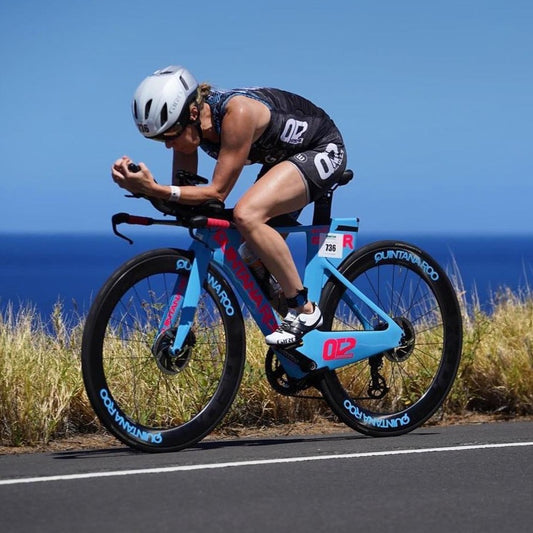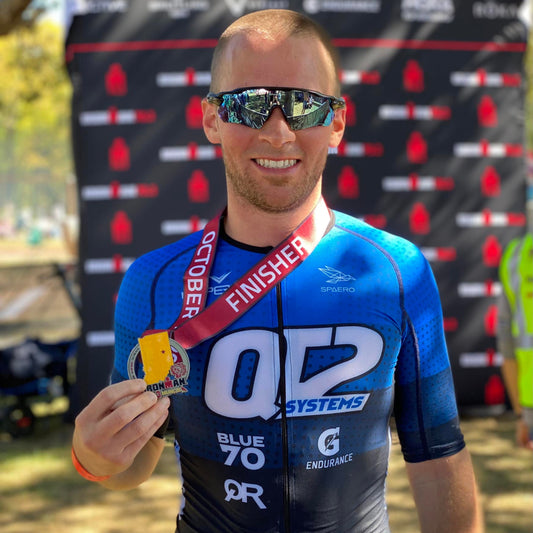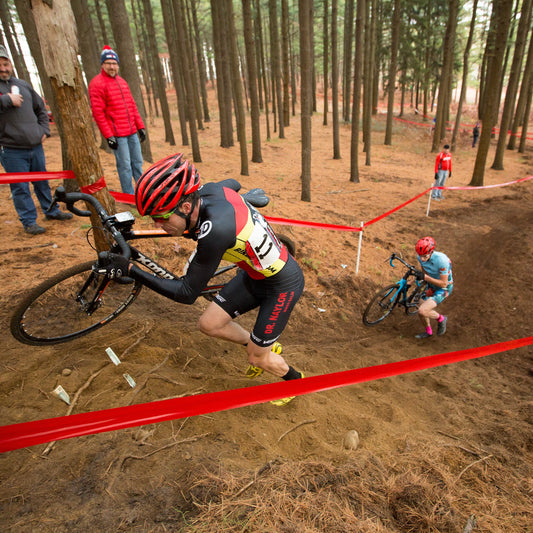I am sure you have been told to that you should stretch after you train. But why? What's the science behind the benefits of stretching?
To understand how the principle of stretching works, it is important to define two proprioceptive parts of a muscle, the golgi tendon organ and the muscle spindle.
Golgi Tendon Organ (GTO)
The GTO is a nerve receptor located at the junction of a muscle and tendon. During a stretch, the GTO senses tension in the muscle/tendon and sends a signal via afferent neurons to the spinal cord. The spinal cord then sends a signal back to the muscle to relax via efferent neurons. This is called the Golgi tendon reflex. The GTO exists to regulate muscle tension so that injury does not occur to a muscle and its associated connective tissue.
Muscle Spindle
Muscle spindles are located deep within a muscle. Muscle spindles sense change in muscle length as well as the range of change in length and send a signal to the spine. This signal triggers the stretch reflex (also called myotatic reflex). The stretch reflex resists the increase in muscle length by causing a muscle to contract. The more rapidly muscle length increases, the stronger the stretch reflex is. Therefore, the primary function of muscle spindles is to protect the body from injury due to over-stretching.
The goal of stretching is to minimize the stretch reflex so that a muscle can be lengthened.
RANGE OF MOTION AND FORCE PRODUCTION
The stiffer a muscle (and tendon), the greater the elastic response. In other words, the greater the stiffness of the muscle-tendon unit, the greater the potential energy source is. However, if an individual’s flexibility and range of motion do not match the degree of flexibility required for a particular movement, performance will decrease and the potential for injury will increase. Therefore, the amount of flexibility and range of motion in a particular area should match the amount of flexibility required for the activity being participated in. Substantially more or less flexibility than is required will negatively impact an individual.In particular, too much range of motion often equates to a lack of neuromuscular control for a given area as well as a decrease in force production.
STRETCH TIME DURATION
While there are contradictory studies regarding exactly how long a stretch should be held to be most effective, it appears that somewhere around 30 seconds is ideal. By holding a stretch for 30 seconds, the stretch reflex will be minimized, thus allowing for greater range of motion. Very short and/or sudden stretches likely will trigger the stretch reflex and therefore will inhibit the ability of a muscle to stretch.
PROPRIOCEPTIVE NEUROMUSCULAR FACILITATION (PNF)
A PNF stretch consists of a stretch followed by a muscle contraction of the muscle that was just stretched. A partner moves a body part to its range of motion (ROM) limit and then the client contracts the muscle being stretched for 10‒15 seconds before relaxing the muscle briefly. The partner then moves the body part to a new ROM. This cycle is repeated two or three times in total.
PNF stretching works because of the effect it has on the Golgi tendon organ. During PNF stretching, a muscle is repeatedly contracted and relaxed, which triggers the Golgi tendon reflex numerous times. This expands the ROM of the targeted body part beyond what non-PNF stretches can typically accomplish.
WHAT ABOUT FOAM ROLLING?
The widely accepted theory surrounding foam rollers is that the more it hurts, the better it is working. This could not be further from the truth. The reality is that too much compression overstimulates the muscle spindles (i.e., nervous system) and causes the muscles to shorten in response as a protective measure against injury. Additionally, too much compression can damage muscles and connective tissue on a cellular level (fibroblasts) and actually increase inflammation rather than reduce it.
Individuals typically apply much more pressure than is necessary and, frequently, in the wrong locations (ex: IT Band). Just because pressure is applied to a tender area via a foam roller or by other means, the pain and tightness will not necessarily go away. In some cases, and as noted above, it can actually make it worse, as excessive pressure from the roller can create trauma.
When fascia is irritated it becomes inflamed. Inflammation leads to the fascia shortening and becoming extremely tight in a localized area. Reducing fascial tightness requires much lighter pressure in a specific area and for longer periods than is typically utilized with standard foam-rolling protocol.
SUMMARY
As noted previously, so long as a stretch isn’t too short (< 5 seconds), the exact time duration to get the best benefit is largely individually based. Therefore, slowly stretching and holding for around 30 seconds is recommended. Additionally, so long as there is not pain is associated with foam rolling, it is likely a great medium for reducing the stretch reflex without decreasing force production.
Jon Falk is a coach with QT2 Run and Team In Training. Jon is a student of the sport of running, having earned coaching certifications from the RRCA and USATF, as well as a MS in Exercise and Sports Science.






